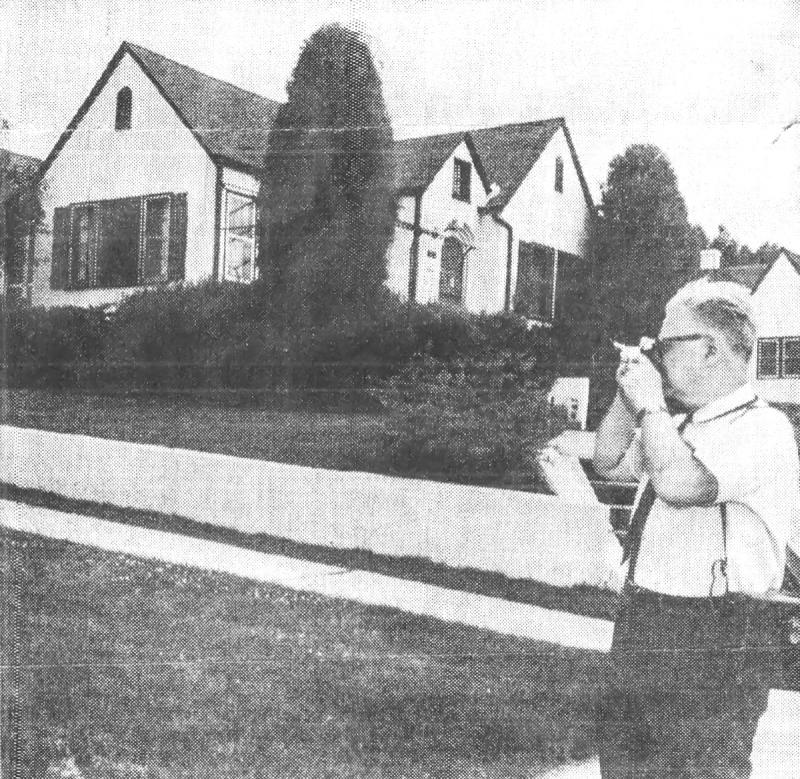
Nikola Tesla Articles
Tesla Not Awed by Storms; Yet Feared Elevators
The inventor Nikola Tesla created a storm in his laboratory near Foote and Pikes Peak Avenues sometime in 1899 which threw out bolts of lightning some 135 feet long. It blew out all the lights in Colorado Springs and the resulting thunder could be heard by residents in Cripple Creek. Yet this man, an electrical genius, insisted upon having a room on the second floor of the Alta Vista Hotel because he was afraid of elevators. This was learned Saturday from Mrs. Julia Hoefer, daughter of W. Hoyt Stevens who built the hotel, at an open house hostessed by Mrs. Wanetta Draper and Mrs. Inez Hunt at the latter's home at 1107 Wood Ave. The open house was held for persons in the region who remembered anything about Tesla, and for Kenneth M. Swezey, a science and engineering writer from Brooklyn, N. Y., who is here in Colorado Springs doing research on a book he plans plans on Tesla. About 20 persons attended.
Mrs. Draper and Mrs. Hunt, local writers, are also doing a book on Tesla's work in Colorado Springs.
Mrs. Hoefer, who was about 16 at the time, lived at the hotel with her family. She remembered Tesla as a "very kind" man but quite eccentric. A fastidious man, he insisted that his room #207, she remembers be supplied with 18 fresh towels daily.
"He might not use all of them," she said, "but they had to be available."
She also remembers that he was frightened of horses A buckboard would arrive at the hotel every morning to transport Tesla to his laboratory and the driver reported that sometimes if he went too fast, Tesla would brace himself in fear and get prepared to jump if the horses galloped too fast.
Frank Riddle remembers playing in the area where the laboratory was located.
Riddle said the area had no houses - "it was like a common then" - and the only buildings nearby were the Union Printers Home, St Francis Hospital and the Deaf and the Dumb School.
Mrs. Hunt displayed two pictures of the experimental station taken at the time which showed these buildings in the background with Pikes Peak in the distance.
The station, Mrs. Hunt said, had been torn down about 1905 and no trace remains, but to the best of anyone's knowledge, it has been pinpointed to the Foote and Pikes Peak Avenues corner.
Several people remembered seeing Tesla sitting near the station drawing and recalled that he was "very polite, very understanding."
Swezey, who knew Tesla the last 19 years of the scientist's life, Tesla was born in 1856 and lived to be about 80, mentioned that in studying the man's writings, Tesla had mentioned the "old city coal mines" which he said were about 100 yards from the laboratory.
None of the people present could remember the location of the coal mines in order to fully establish the laboratory's exact site.
Tesla, a Serb, came to America in his late twenties and arrived in Colorado Springs in 1899 to observe lightning at high altitudes. He believed that metal deposits in the mountains contributed to the frequent storms but this was never proved.
He also had a belief that electrical current could be transmitted underground but his too has never been proved.
W. Glenn Jackson, 14 at the time and employed at Ashby Jewelry Store, remembered riding his bicycle out to the lab to deliver two $20 gold pieces to Testa for filings.
When he gave the parcel to Tesla, the inventor reached into his pocket, withdrew several coins and handed the lot to the boy. Later, upon examination, Jackson discovered a Napoleon III coin mixed with the change.
He spent the American money "as fast as I could" but having no place to spend the French coin. Jackson kept it. He still has the thin piece of silver, which he showed to the group.

